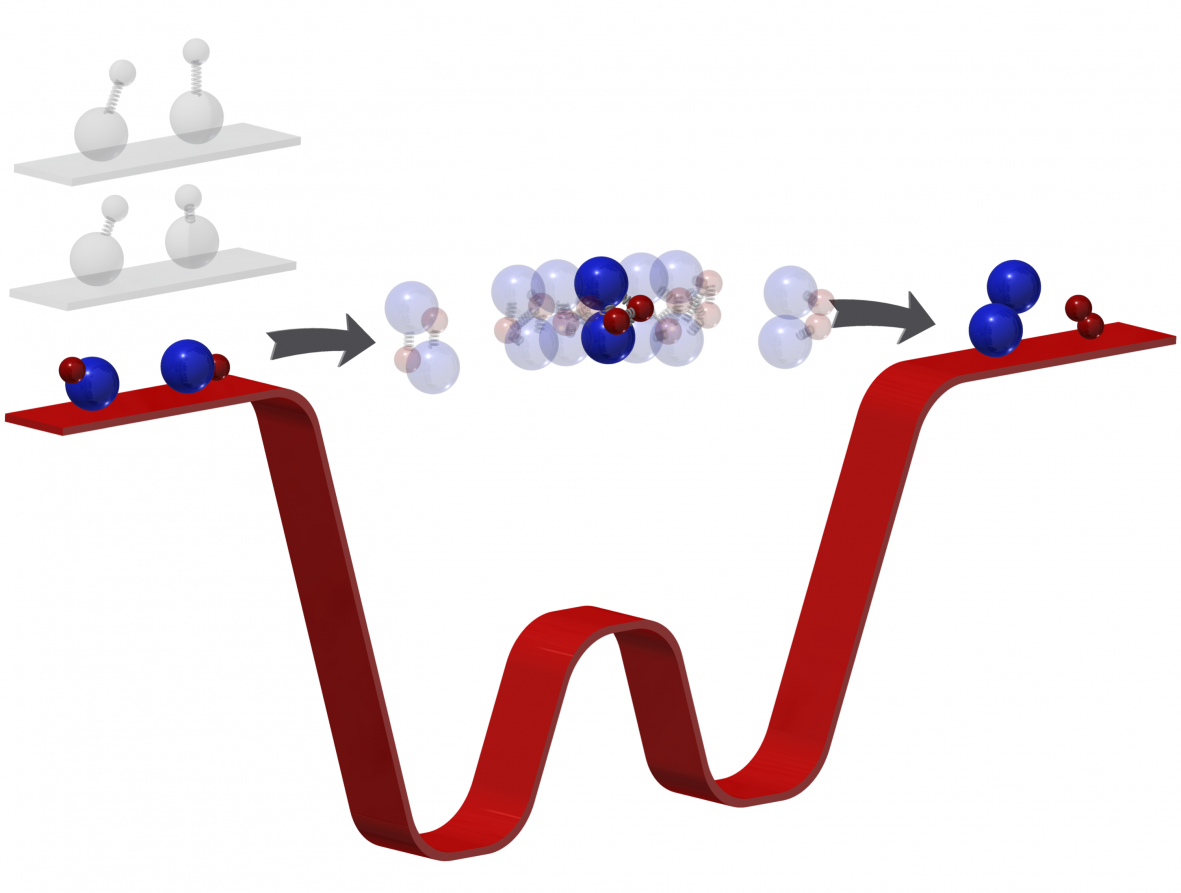The Science
The Impact
This work is the first time scientists have directly observed transient intermediate complexes formed during an ultracold bimolecular chemical reaction. This research provides scientists access to the moment where chemical bonds break and new molecular species form. This opens the door to new fundamental studies of controlled chemical reactions in the quantum regime. These studies will shed new light on the underlying mechanisms which drive reactions. Understanding these mechanisms will help scientists determine how occupied quantum states will be distributed in the resulting chemical products.
Summary
For the first time scientists have directly observed an intermediate, K2Rb2*, in the ultracold chemical reaction: KRb + KRb à K2 + Rb2. These ultracold temperatures afford sufficient quantum level detail to benchmark theoretical calculations.
Chemical reactions between heteronuclear diatomic molecules (the reactants) can result in the exchange of nuclear partners via the breaking and formation of chemical bonds. Such an exchange produces new molecular species (the products) which are distinct from the reactants. For this to occur, the reactants must come together for a brief moment, where they form an intermediate, four-atom complex. In conventional reactions near room temperature, this complex exists for such a short time that it is highly challenging to observe directly, even with ultrafast laser techniques. At ultracold temperatures, on the other hand, the reactant molecules can become trapped for an extended period in this state, making it possible to detect.
Here,scientists produced a gas of chemically reactive KRb molecules in their electronic, vibrational, and rotational ground state, at an ultralow temperature of 500 nK. They then utilized photoionization to perform mass spectrometry and velocity-map imaging of the various species involved in the reaction, KRb + KRb à K2Rb2à K2 + Rb2. Using this novel approach, the authors were able to monitor the reaction in real time and to directly observe both the reactants and products, and, for the first time, the intermediate K2Rb2 complex.
Funding
This work was supported by funding from the Department of Energy Office of Science, the David and Lucile Packard Foundation, and the National Science Foundation through the Harvard-MIT Center for Ultracold Atoms. The 40K isotope used in this work was provided by the DOE Office of Science, specifically by the Isotope Program in the Office of Nuclear Physics.
Original post https://alertarticles.info



